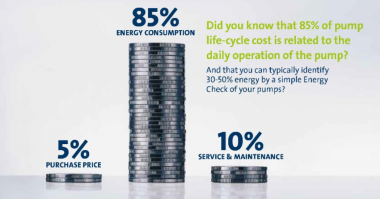Welcome to the Centrifugal Pump Minute today. We’re talking about vibration. My name is James Farley and on the Griswald product manager Centreville.
Pumps operate at high speeds, eighteen hundred, thirty-six hundred and sometimes higher. At these speeds, high levels of vibration can be extremely damaging to the pump components such as mechanical seals, bearings and couplings are going to be the first components to fail due to vibration. These can fail gradually overtime such as long term bearing wear or they can fail very quickly such as a mechanical seal face cracking.
We need to make sure that we’re maintaining low levels of vibration to prevent these types of failures from occurring. Now the root cause of vibration can be a lot of mechanical issues such as an unbalance of mechanical components such as an unbalanced impeller or shaft. It can also be due to a non-rigid foundation or baseplate that the pump is attached to. Sometimes you have loose bolts on your feet or soft foot conditions, that can result in vibration along with coupling misalignment where your shafts are not aligned between the pump and the motor.
Beyond mechanical issues, vibration can be caused by hydraulic issues as well if the pump is operating with cavitation. You can get a vibration in the inlet of the pump or if you’re running the pump way off the best efficiency point you can start getting vibration as well. Vibration can be so severe that it can be seen visually. If this is the case you need to act upon it immediately and resolve the issue. In other cases, you need instrumentation to be able to measure the vibration levels. Instruments such as handheld vibration mics that can be used where you hold the instrument up against the pump to get a vibration reading. More advanced equipment can be used to monitor vibration such as these sensors that are attached to the pump. This can allow us to collect data continuously about the vibration levels and we can measure tri-axial vibration as well.
In a production environment, you often want a permanent solution that can continuously monitor the vibration levels of the equipment. Vibration experts and advanced PDM equipment. Such as safeguard are able to analyze the vibration signatures and identify the root cause.
Now let’s review the impact of one of the root causes of excessive vibration coupling misalignment. The graph you are looking at shows the vibration signature for a pump operating with proper alignment and one that is misaligned. As you can see the misaligned pump exceeds recommended vibration limits. I hope you’ve learned something about vibration today. Thank you for joining us.




Comments